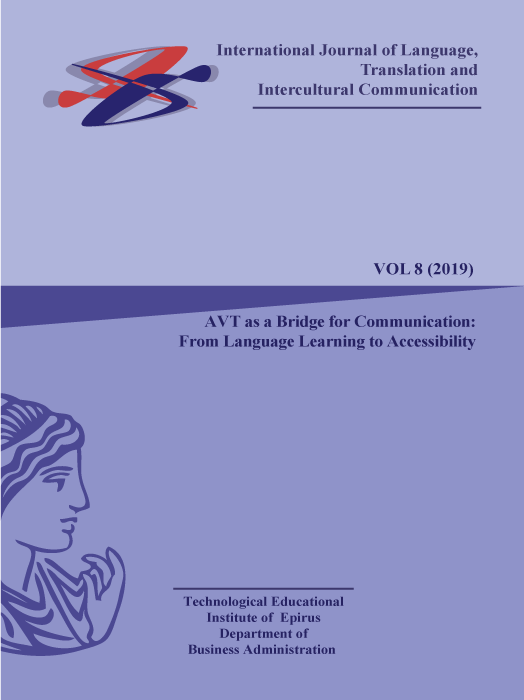Intercultural Mediation and Accessibility in Heritage

Abstract
This article aims to propose a strategy taking in consideration the accessibility of each European citizen to information in all its forms especially audio-visual Media and Heritage. It is known that interlingual mediators are playing a huge part in the world of Information and Communication with the involving difficulties of common core theory and training. Moreover, technology can be the ideal tool to enhance accessibility. Thus, mobile phone applications can offer sometimes both audio and visual content to Museum visitors as well as sign language and text. This part of our work clarifies the needs and the values of an adapted methodology for training.
In addition, this project gives to inter-cultural mediators the opportunity to work and to research on different applications and software programs in screen-titling, dubbing, re-speaking and screen-titling for the Deaf and Hard of Hearing, audio description and to obtain a training at professional agencies as well as to present a final assistance of quality.
Article Details
- How to Cite
-
HAMAOUI, N. K., & STAVROU, C. (2019). Intercultural Mediation and Accessibility in Heritage. International Journal of Language, Translation and Intercultural Communication, 8, 77–92. https://doi.org/10.12681/ijltic.20278
- Section
- Articles

This work is licensed under a Creative Commons Attribution-NonCommercial-ShareAlike 4.0 International License.
Copyright Notice
Authors who publish with this journal agree to the following terms:
- Authors retain copyright and grant the journal right of first publication with the work simultaneously licensed under a Creative Commons Attribution License that allows others to share the work with an acknowledgement of the work's authorship and initial publication in this journal.
- Authors are able to enter into separate, additional contractual arrangements for the non-exclusive distribution of the journal's published version of the work (e.g., post it to an institutional repository or publish it in a book), with an acknowledgement of its initial publication in this journal.
- Authors are permitted and encouraged to post their work online (e.g., in institutional repositories or on their website) prior to and during the submission process, as it can lead to productive exchanges, as well as earlier and greater citation of published work (See The Effect of Open Access).


